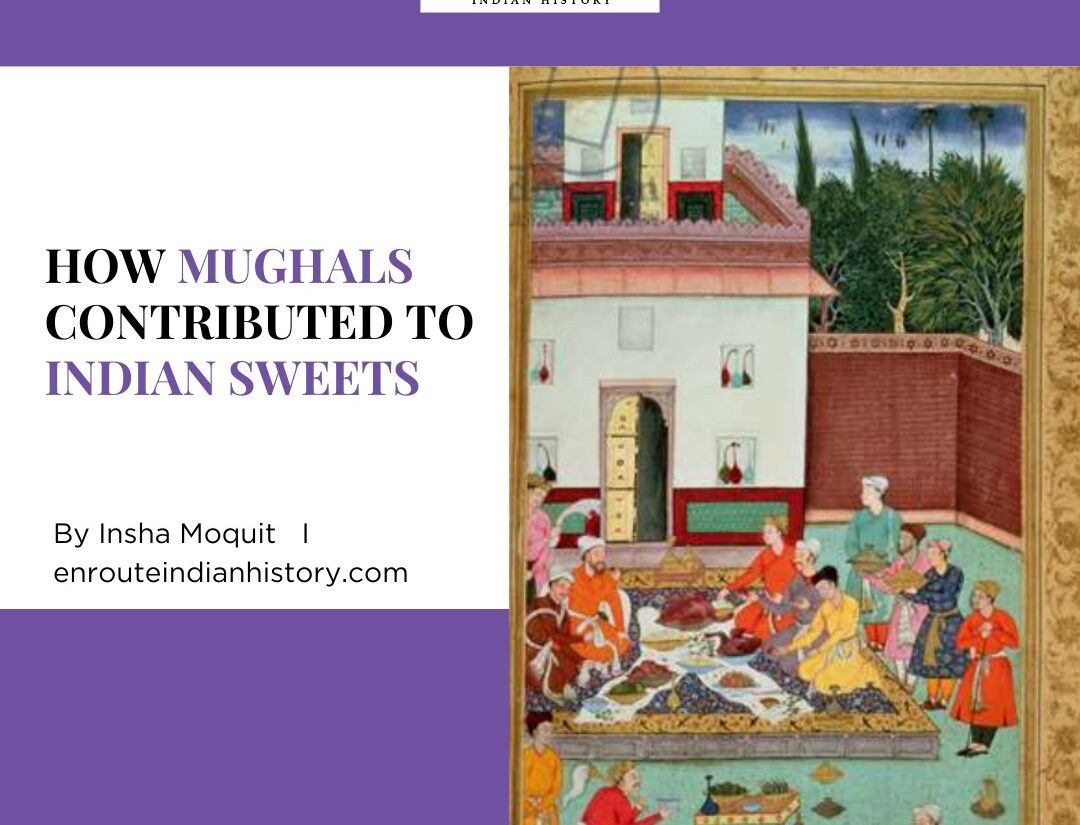
The holy month of Ramzan brings with it a time of prayers, fasting from dusk to dawn and community bonding. The followers eat their ‘sehri’ which is the first meal of their day post which they fast without food and water till dawn. This is when it’s time for their second special meal for the day. This is called Iftar.
Derived from an Arabic word Iftar means to break. For the people who keep the fast-during Ramzan Iftar is not just a dinner meal. It is a spiritual experience. While staying thirsty and hungry through the day, the people realize the value of food and water. The consumption of this Iftar food brings with it a sense of gratitude and thankfulness. Iftar is also considered as a source of spiritual learning. So, the Iftar food for the people partaking in it becomes spiritual food.
While breaking the fast in the evening the people consume dates which are a staple in the menu of Iftar food. It is said that the founder of Islam prophet Muhammad himself consumed dates when he broke his fast. The consumption of dates is considered Sunnah. Dates form an integral component of Iftar food and sometimes these have a variation in the variety which are served during Iftar and during the Iftar parties. Sometimes these even have almond paste in them. This Iftar staple also has health benefits. They are rich in fiber and aid in digestion and they may even help in combating lower blood sugar levels. Also, a source of potassium and minerals are what people eat to break their fast and only then do they partake of the food which is being served.
There is also another religious significance to Iftar. It is believed that people who are less fortunate and privileged should be offered an Iftar meal by the ones who have access to better means of living and livelihood. Even children should be involved in setting up the table and the children are sometimes encouraged to put water on the table for when the fast is to be broken.
The Iftar parties are evenings which see the coming together of friends and families and they all break their fast together, eat dates together and even pray together. I have fond memories of having attended Iftar parties some years ago when I got admitted to Delhi’s Jamia Millia Islamia. As a master student I was really looking forward to attending an Iftar party with my classmates and faculty. It was an evening which saw all of us dress up in festive clothes and reach our venue. Everyone sat and broke their fast together. We had a date, some black chana (chickpeas) and Biryani along with Pakode. The food and the spirit of eating together was a thoroughly enjoyable affair and the conversations turned sweeter with the glasses of ‘Roohafza Sharbat’. For friends and seniors who were away from home during Ramzan, this Iftar party filled the void of being away from home, being away from people who care for you.
Filling this void in Jamia is another beautiful tradition. The students who reside in the hostels and are unable to travel for the holy month are taken care of by their hostel staff and mess employees. The hostel students are diligently served their sehri and Iftar food every morning and evening by the mess staff and the menu is also decided accordingly.
The menu for the Iftar food is staple with dates, pakode, fruit chaat, biryani and of course a sweet dish. Festivals are best enjoyed with sweets and India has had a tradition of celebrating all festivals with sweets which are specifically associated with them. Seviyan or Vermicelli in sweet milk are a staple at Eid and are synonymous with the festival. There are however some other staple Iftar food items which add a sweet note to the menu of Iftar food. This article is a dedication to the spirit of Iftar through the sweet dishes which form a significant part of the Iftar food. The iftar parties are brought alive with people relishing these delectable dishes.
-
Seviyan or sweet Vermicelli
There are various stories which are associated with the origins of vermicelli. Some food writers and historians have linked it to Italy while some have traced their association with the coming of Marco Polo to India. Some however still have linked it to the trade which India had with the Arab world.
Also known as meethi seviyan, these strands of vermicelli cooked in milk and sugar and topped with nuts is a popular sweet dish during Iftar and Eid celebrations. Different parts of the country have regional variations when it comes to the making of this dish. In the areas such as Delhi and Uttar Pradesh, khoya or evaporated milk solids add to the fuller texture of the dish. In the regions such as Gujarat and Maharashtra, seviyan are topped with saffron and chopped nuts such as almonds and pistachios and these help in elevating the taste. The southern part of India has a creamier version of the seviyan or sweet vermicelli as they add coconut milk to make this delectable dish.
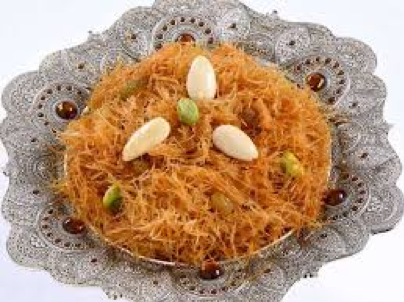
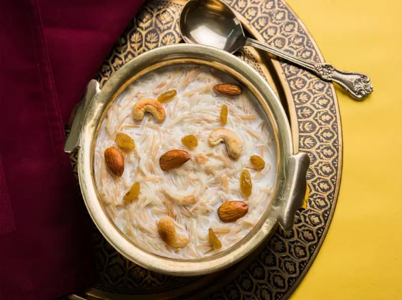
Exhibit-1: Vermicelli recipe / Sweet Seviyan
-
Shahi Tukda
One of the most popular dishes of Iftar, the Shahi Tukda has its origins in Awadhi cuisine. Some food historians have traced its origins to the Mughal court. Shahi means royal and tukda means a piece. This Iftar dish has crisp pieces of bread which are fried till they are brown and then they are topped with Rabdi which is a milk sauce and nuts. The strands of saffron provide a lovely taste to this dish. The nuts make it crunchy while the bread dipped in rabdi transports the people eating it straight to food heaven.
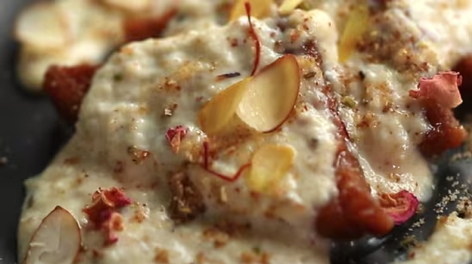
Exhibit-2: Shahi tukda
-
Kesar Makhana Phirni
It is believed that Phirni originated in Persia or in the middle east and it was brought to India by the Mughals. They have also been credited as being the inventors of this Iftar dish. The rich milky pudding has been famous for its aroma. In Persia it was called the food of the angels and was known as ‘Sheer Binij’. It is also believed that Phirni was offered to the Prophet when he had soured to the seventh heaven to meet God.
The classic Phirni is very similar to another sweet dish called ‘Kheer’. The primary difference however is that Phirni is made with ground rice while kheer is made with whole grains of rice. Times have witnessed the innovations in the dishes and this has come to be very popular while celebrating Iftar. The Kesar Makhana Phirni is a spin on the classic old phirni in which ground rice is replaced with fox nuts or makhane. The strands of kesar or saffron give the phirni its unique color. The fox nuts are packed with nutrients such as protein and calcium and are also low in fat. The key ingredients which make this dish a star during Iftar is milk, fox nuts, saffron, ghee, cardamom powder along with nuts such as almonds, and pistachio silvers.
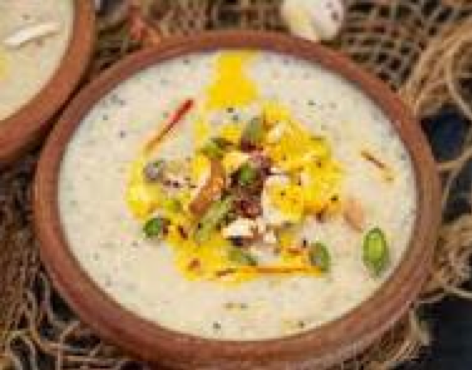
Exhibit-3: Kesar Makhana Phirni
-
Sheer Khurma
This is a staple during the Eid celebrations and even during Iftar. In Persian Sheer translates as Milk and Khurma translates as dates. This is another delicacy made using vermicelli. Fine vermicelli is simmered with milk, dates, nuts and sugar.
The wide-ranging dry fruits and nuts from Pistachios and almonds, to cashews and raisins are fried in ghee. The vermicelli is also fried in ghee. The origins can be traced back to Arabia as the Arabs had dates with milk. The flavor of this celebration staple dish is enhanced by adding rose water, cardamom, saffron and sometimes even cloves.
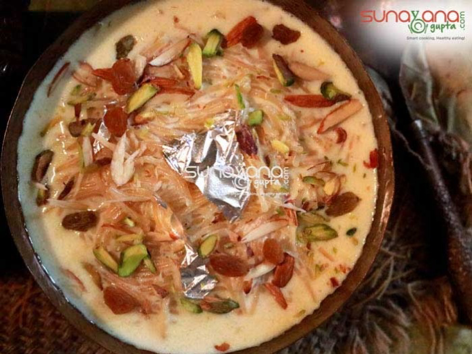
Exhibit-4: Delicious Sheer Khurma
-
Apple Halwa
Halwa is a staple in many Indian homes. The sheer varieties of halwa have ingredients which vary from semolina or suji to Besan and even carrots (gajar). One variety of halwa which is made for Iftar food is the Apple Halwa. This Halwa is sweet and delicious and is made of ghee, apple, nuts, sugar and cinnamon and vanilla essence.
This Halwa is considered to be lighter than its counterparts as it is not made using milk, cream or evaporated milk solid known as khoya. The sweet apples are cut and cooked with a dash of water and post cooking they are mashed. Sweetened with jaggery or sugar, when fully cooked to this Halwa one can add cinnamon and vanilla essence. Topped with fruits this halwa stays good in the fridge for about a week.
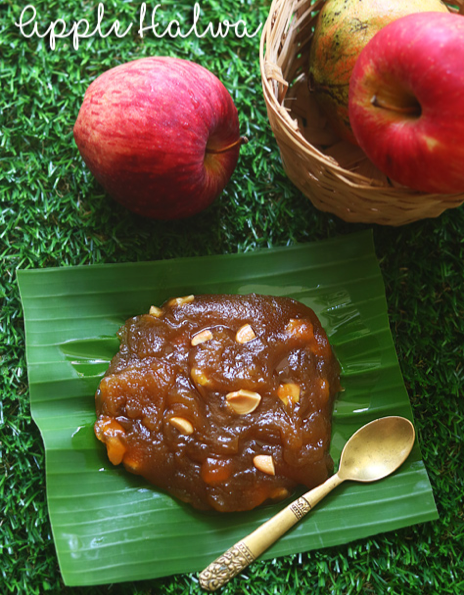
Exhibit 5: Apple Halwa
-
Khubani ka Meetha
The credit for this delicious Iftar dish goes to the founder of Mughal rule in India, emperor Babur. This dish is made from Apricots. For many decades this sweet dish was restricted to the royal household as only the people with affluent resources could afford to consume this food. Today however the times have changed and it has become a popular sweet especially in Hyderabad. The dried apricots are deseeded and soaked overnight. They are then cooked in water after adding sugar. Post being cooked they are mashed and topped with either an ice cream or with custard.
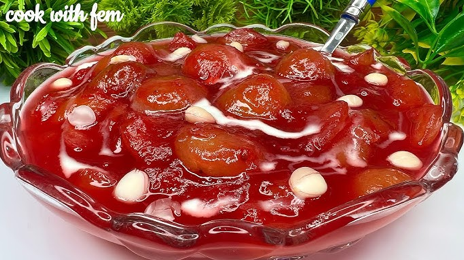
Exhibit-6: Khubani Ka Meetha – Stewed Apricot Dessert
The Iftar spreads can be lavish and people can enjoy breaking their fast in a mosque or at an Iftar party and it can also be a simple home affair. How one wishes to do it is one’s prerogative but one thing which makes Iftar so special is that it marks the culminations of the days fast and the Iftar meal is a salute to the spirit of a believer who thanks God while partaking this meal after staying hungry and thirsty through the day. Iftar is special and therefore it has also been added to the list of intangible cultures by UNESCO.
REFERENCES
- https://www.awazthevoice.in/india-news/langar-and-iftar-the-history-of-eating-together-in-india-20684.html
- https://www.halaltimes.com/what-is-the-significance-of-iftar-gatherings-in-muslim-communities/
- https://timesofindia.indiatimes.com/city/delhi/thanks-to-special-iftari-at-jamia-hostels-students-dont-miss-home/articleshow/59068493.cms
- https://ich.unesco.org/en/RL/iftar-eftari-iftar-iftor-and-its-socio-cultural-traditions-01984
- https://timesofindia.indiatimes.com/travel/travel-news/iftar-included-in-the-unescos-intangible-cultural-heritage-list/articleshow/105836685.cms
- https://www.spiritofislam.co.in/spiritnew/index.php/the-significance-of-iftar#:~:text=In%20this%20sense%2C%20iftar%20is,and%20not%20a%20lavish%20affair.
- https://www.foodrepublic.com/1531254/suhoor-iftar-ramadan-explained/
- https://y20india.in/why-muslim-break-their-fast-with-dates/#:~:text=According%20to%20Islamic%20beliefs%2C%20breaking,fast%20by%20eating%20dates%20only.
- https://www.halaltimes.com/what-is-the-significance-of-iftar-gatherings-in-muslim-communities/
- https://muslimhands.org.uk/latest/2019/04/iftar-ideas-preparing-for-ramadan-2019
- https://timesofindia.indiatimes.com/life-style/food-news/the-best-ramzan-sweets-for-iftaar/articleshow/69234959.cms
- https://theurbantandoor.com/phirni-dessert-origin/
- https://www.whiskaffair.com/kesar-makhana-phirni-recipe/#about-kesar-makhana-phirni
- https://www.indianhealthyrecipes.com/sheer-khurma-recipe-sheer-korma/
- https://www.vegrecipesofindia.com/apple-halwa-recipe-apple-halwa/
- https://food.ndtv.com/food-drinks/the-story-of-vermicelli-from-seviyan-and-falooda-to-pasta-and-noodles-1625173
- https://somethingiscooking.com/2017/04/20/qubani-ka-meetha-2/#:~:text=History%20of%20Qubani%20aka%20Apricots&text=The%20Mughal%20ruler%20Babar%20was,a%20dessert%20out%20of%20it.
- https://www.sharmispassions.com/apple-halwa-recipe/
- https://recipes.timesofindia.com/articles/features/7-types-of-seviyans-you-must-try-this-ramadan/photostory/59033956.cms
- https://www.hindustantimes.com/lifestyle/recipe/ramzan-2021-give-your-iftar-a-sweet-twist-with-this-shahi-tukda-101619336541805.html
- https://www.whiskaffair.com/kesar-makhana-phirni-recipe/
- https://www.sunayanagupta.com/recipes/sheer-khurma-recipe-delicious-sweet-dish-for-iftar-party-of-ramadan
- https://www.sharmispassions.com/apple-halwa-recipe/
- https://www.cookclickndevour.com/khubani-ka-meetha-hyderabad-special/
- May 15, 2024
- 6 Min Read
